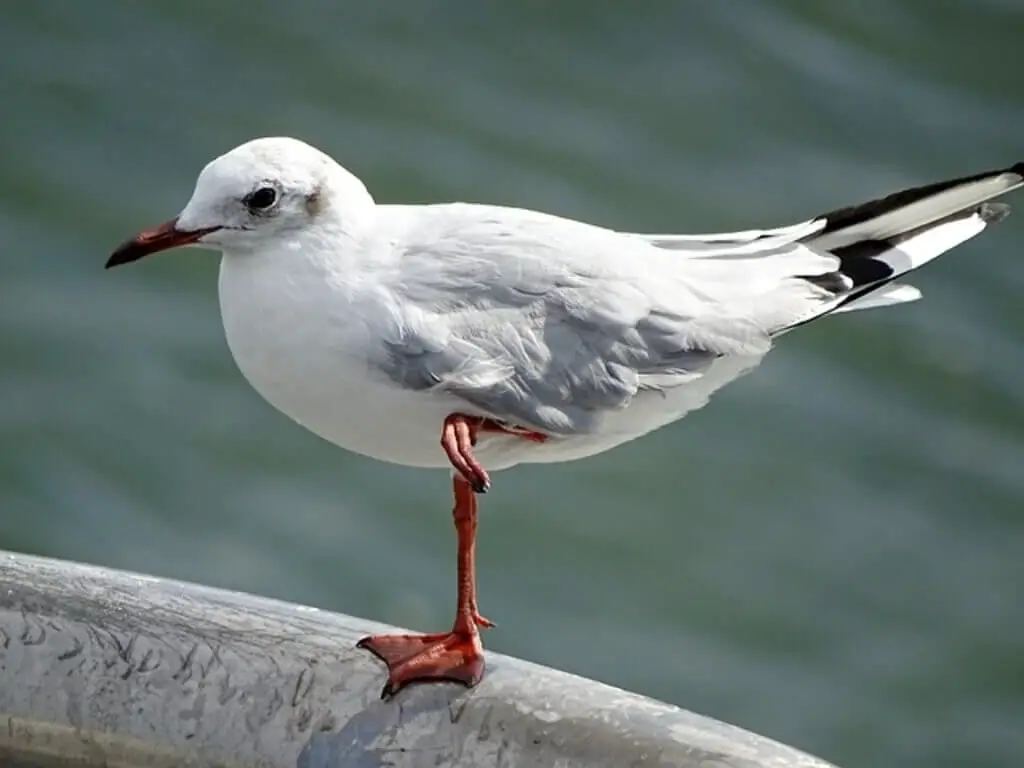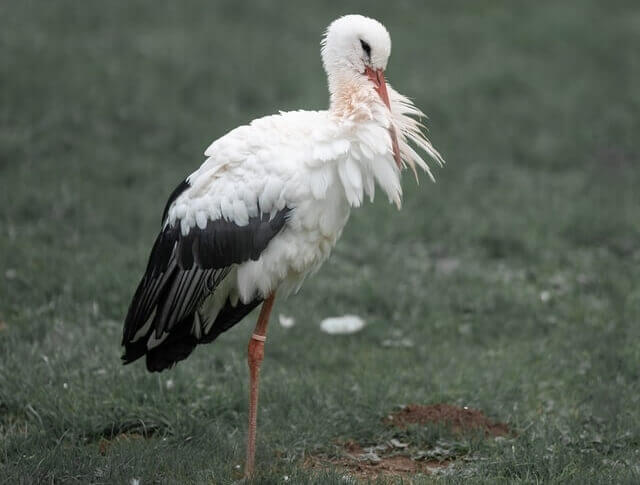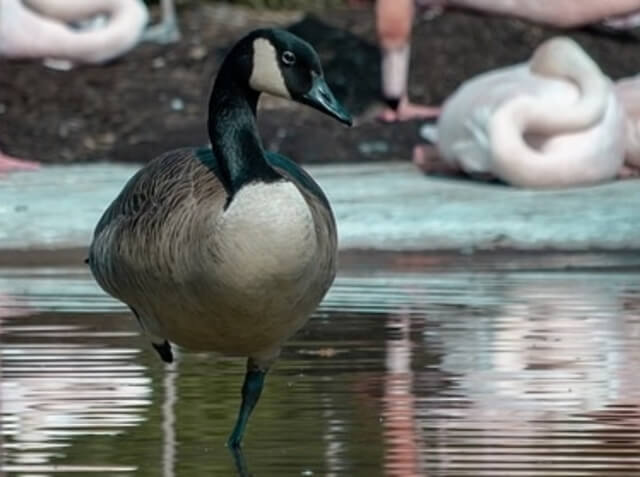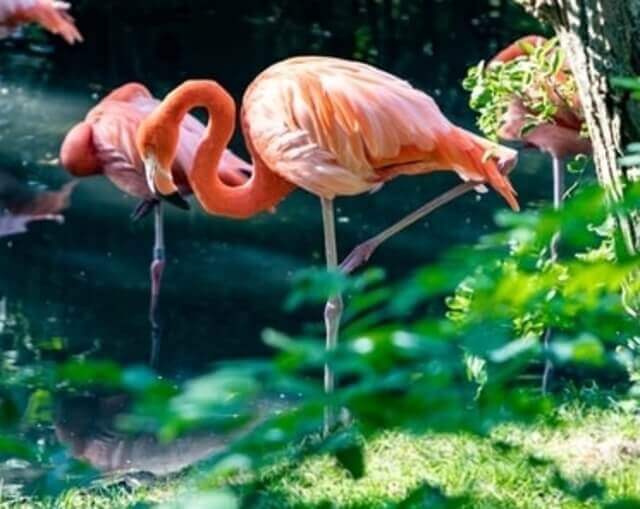Discover the intriguing world of birds that stand on one leg. In this exploration, we uncover the reasons behind this captivating avian behavior and what it reveals about the natural world. Join us on a journey into the fascinating habits of these remarkable birds.
Table of Contents
Why Do Birds Stand On One Leg?
Birds standing on one leg is a behavior that has fascinated scientists and bird enthusiasts for a long time. Several theories have been proposed to explain this behavior:
- Thermoregulation: One of the most widely accepted theories is that birds stand on one leg to regulate their body temperature. Birds have a high metabolic rate, and their legs can lose heat rapidly. By tucking one leg up into their warm feathers, they can conserve heat and reduce heat loss through their limbs. This is especially important in cold weather when keeping warm is essential for survival.
- Energy Conservation: Standing on one leg may also help birds conserve energy. Balancing on one leg requires less muscular effort than standing on two, which can be important for reducing fatigue during periods of rest.
- Sleeping Position: Many birds stand on one leg when they are resting or sleeping. This behavior may help them maintain balance while sleeping on branches or perches, reducing the risk of falling.
- Predator Avoidance: Some researchers have suggested that standing on one leg might be a way for birds to reduce their visual profile, making them appear smaller to potential predators. This could be particularly relevant when birds are roosting or resting in exposed areas.
- Feeding Behavior: In some cases, birds might also stand on one leg while feeding in water. This behavior could help them balance and reach food more easily, such as when wading in shallow water.
It’s important to note that not all birds stand on one leg, and the behavior can vary among species. Additionally, more research is needed to fully understand the reasons behind this behavior in different bird species.
While thermoregulation and energy conservation are commonly cited explanations, it’s likely that a combination of factors contributes to the behavior of birds standing on one leg, and it may vary depending on the specific circumstances and ecological needs of the species.
Types Of Birds That Stand On One Leg
Storks
Storks, found in diverse habitats across the globe, are large and sociable birds. Whether gathering in groups on farms, around parks, or occasionally in solitary contemplation, these birds are a common sight. However, one of the most remarkable attributes that set storks apart is their knack for prolonged one-legged stances. Scientists have diligently probed this distinctive behavior and uncovered its dual purpose.
Standing on one leg, a seemingly elegant act, serves to conserve their energy reserves, a valuable trait for these birds. Furthermore, it also helps them stay warm by minimizing heat loss from their extensive surface area. This fascinating insight into storks’ one-legged postures sheds light on their remarkable adaptability and survival strategies in their diverse environments.
Geese
Geese rank among North America’s most ubiquitous avian inhabitants. These adaptable birds make their homes around lakes, marshes, and fields, where their diets may include plants or insects. What’s particularly intriguing about geese is their penchant for weight distribution – they often balance on one leg, while the other rests comfortably tucked against their bodies.
This practice serves a dual purpose. First, it’s an energy-saving strategy and a defensive measure against potential predators. Second, it plays a crucial role in regulating their body temperature. The act of standing on one leg facilitates improved blood circulation to their feet, helping geese to effectively manage their thermal equilibrium in the ever-changing environments they inhabit.
Hawks
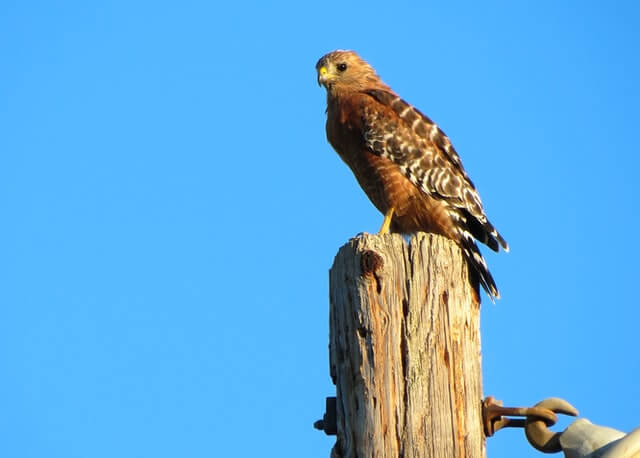
Hawks, like other birds of prey, occasionally exhibit the fascinating behavior of standing on one leg. This behavior is commonly associated with thermoregulation, as it helps them minimize heat loss through their unfeathered tarsus, the joint connecting the foot and lower leg. Additionally, it serves as an effective insulation method, preserving warmth in their other foot by shielding it from the cold ground.
It’s not unusual to observe hawks in a state of stillness, perched steadfastly on tree branches or fence posts for extended periods. Sometimes, they may assume an unconventional posture, skillfully balancing on one leg while extending the other, either in front or behind them, showcasing their remarkable adaptability in the wild.
Avocets
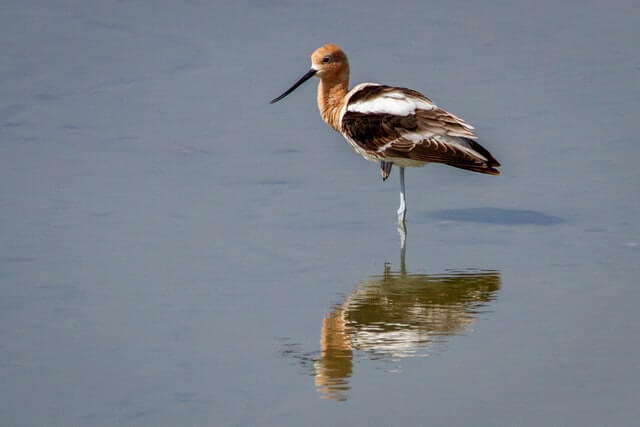
Avocets, captivating denizens of wetlands found in locales as diverse as marshes, salt marshes, and coastal estuaries across North America and the global stage, exhibit a distinctive behavior. They have been keenly observed adopting a one-legged stance during periods of rest as an energy-saving strategy.
This posture aligns with their penchant for comfort and ease, making it a preferred position when avocets need to slumber or remain motionless for extended intervals. By opting for the single-leg stance, these elegant birds efficiently conserve energy while navigating their watery habitats.
Flamingos
Flamingos are a frequent and striking presence in the swamps and lagoons of southern Florida. However, what might surprise you is their occasional one-legged stance, a behavior observed during extended periods of sleep or while they are engrossed in feeding. But why do flamingos adopt this peculiar posture?
This intriguing behavior is a testament to their unique adaptations. Flamingos’ bodies are specially equipped to conserve vital body heat by minimizing blood flow to their extremities. Additionally, this one-legged posture serves as an energy-saving tactic, sparing them from the needless exertion of muscles.
Stilts
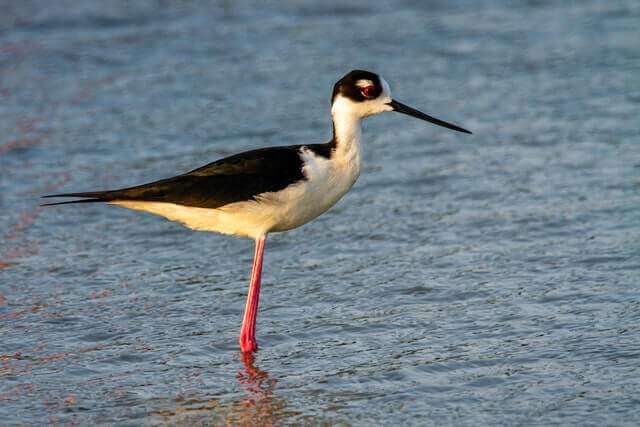
Birds that exhibit the intriguing behavior of standing on one leg have evolved a clever mechanism to combat the chill. Take, for instance, the black-necked stilt, a resident of the Western Hemisphere. When confronted with freezing temperatures, these avian wonders employ a remarkable strategy – they gracefully perch on one leg while the other is snugly tucked beneath them for added warmth.
This act is rooted in the art of thermoregulation, a sophisticated process by which these birds autonomously regulate their body temperatures, effectively shielding themselves from the bitter cold and harsh environmental conditions. It’s a remarkable testament to the adaptability and resourcefulness of nature’s creations.
Ducks

Ducks are masters at staying snug in even the chilliest of environments. One of their ingenious techniques is known as counter-current heat exchange, a marvel of nature that optimizes their body warmth. This system utilizes their intricate network of arteries and veins to efficiently redistribute blood throughout their bodies.
When ducks employ their legs as heat sources, using just one at a time, they achieve a remarkable feat – maintaining a steady body temperature. The unused leg is gently tucked close to their body, forming an additional layer of insulation against the surrounding water or air temperature.
Swans
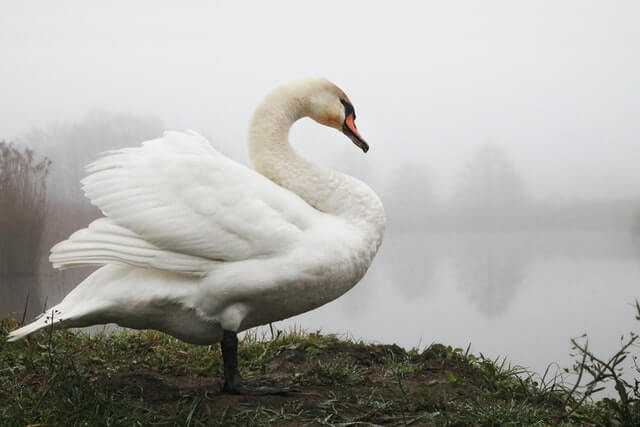
Swans are renowned for their grace and beauty, and they possess a remarkable ability to thrive even in the most frigid environments. Their secret lies in a sophisticated technique known as counter-current heat exchange, a biological marvel that optimizes the circulation of blood throughout their bodies.
In this intricate process, colder blood is directed through the prominent vessels near the surface of their bodies. Here, it can readily absorb warmth from the surrounding air or water before circulating back into the deeper recesses of their bodies. This exquisite adaptation not only showcases nature’s ingenious design but also ensures that swans remain comfortably warm.
Herons
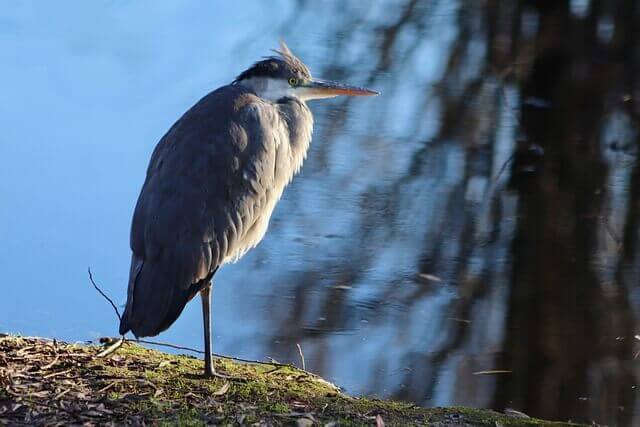
Herons possess a remarkable ability to sustain their one-legged stance for extended durations without succumbing to fatigue. This incredible endurance can be attributed to their highly efficient counter-current heat exchange system, a key to their temperature regulation.
When herons stand on a single leg, they skillfully minimize the surface area exposed to the cold air, thereby preserving the warmth of their legs compared to the alternative of standing on both. In this elegant posture, the blood vessels in their feet are gently compressed, resulting in reduced blood flow and, consequently, minimal heat loss through the skin’s surface.
Egret
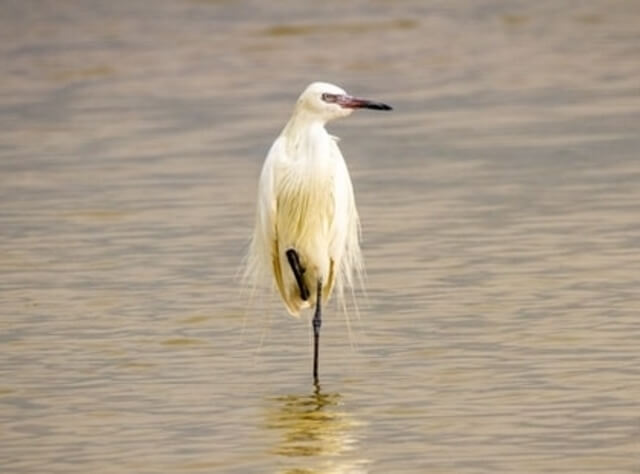
Have you ever caught sight of an egret gracefully poised on just one leg? While it might appear to be a mere act of balance or rest, there’s a fascinating reason behind this avian behavior. Egrets, migratory birds known for their presence in temperate climates, have evolved with a remarkable ability to withstand cold weather by regulating their body heat with precision.
When the mercury dips below 40 degrees Fahrenheit, these ingenious birds adopt the one-legged stance to exert control over their blood circulation in their feet. This remarkable adaptation allows them to fine-tune the amount of blood flow, effectively managing their temperature and preserving their warmth even in the face of chilly conditions.
Ibises
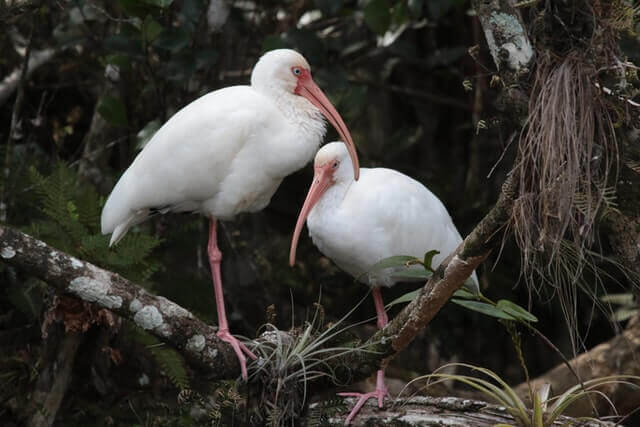
The Ibis, a genus of long-legged wading birds, graces diverse regions spanning Africa, southern Eurasia, and the wetlands and estuaries of the United States. Their distinctive behavior of standing on one leg often piques curiosity. But what drives this avian quirk? The answer lies in their remarkable adaptation – the “rete mirabile.”
Situated at the base of their toes, this specialized network of blood vessels performs a thermal balancing act. It ingeniously allows warm blood to course closely past the cooler skin, facilitating rapid cooling before the blood journeys back to the heart and lungs for reheating.
Eagles

Eagles are renowned for their majestic, soaring flights across the skies, but they occasionally exhibit a more grounded behavior—standing on one leg. What prompts this intriguing stance? Eagles, much like numerous other creatures, adopt the one-legged posture as a clever strategy to combat heat loss during chilly weather.
At the heart of this behavior lies the “rete mirabile,” a remarkable network of blood vessels serving as an internal radiator, efficiently dispersing the heat generated by their vital organs. However, this ingenious system operates optimally when both legs are engaged in the upright stance, maximizing the surface area exposed to the air.
Rails
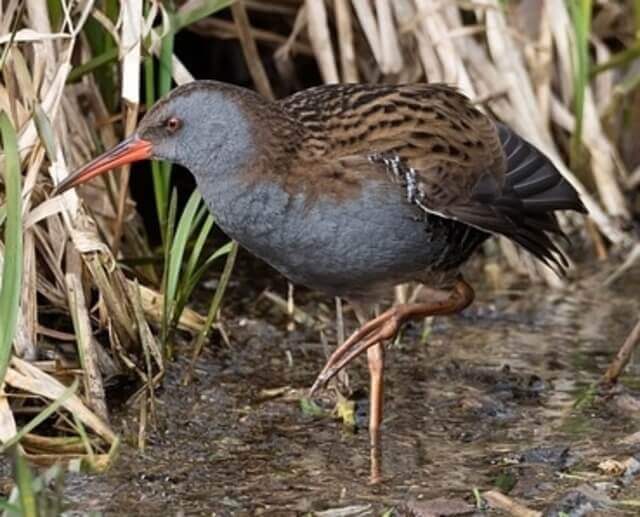
Rails are among the most stunning and graceful avian creatures you might encounter. Observing them perched on one leg in open fields, marshes, or by bodies of water is a sight to behold. But don’t mistake this behavior for idleness; it’s actually a well-honed strategy for energy conservation during their meals and moments of rest.
When a rail assumes this one-legged stance, a remarkable transformation occurs. Their heart rate significantly decreases during periods of inactivity, leading to a substantial reduction in oxygen consumption. This, in turn, minimizes their need for sustenance. By exerting less effort at such times, these birds can invest their energy wisely, allowing them to recuperate and endure periods of fasting, preserving their vitality for when it’s most crucial.
Sandpipers
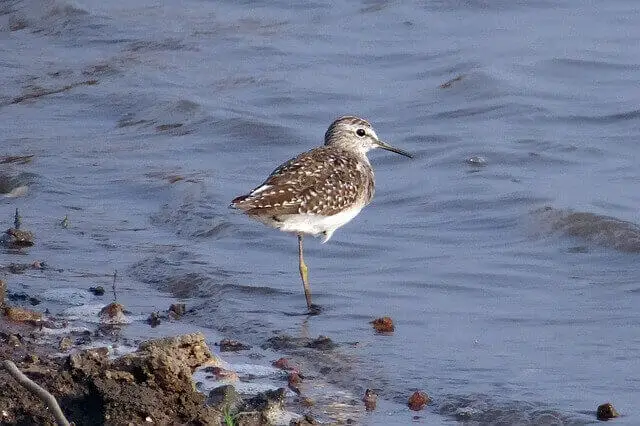
While many people recognize that sandpipers adopt the one-legged stance for resting, few are acquainted with the additional reasons motivating this behavior. Standing on a single leg is an astute energy-saving strategy, as it significantly eases the bird’s task of maintaining equilibrium.
Moreover, this posture contributes to preserving body heat, a particularly crucial adaptation in cooler climates. By elevating one foot off the ground and exposing it to the surrounding air currents, sandpipers effectively create a thermal barrier. This leads to a warmer lower half while conserving a greater amount of energy compared to employing both feet for standing.
Cranes
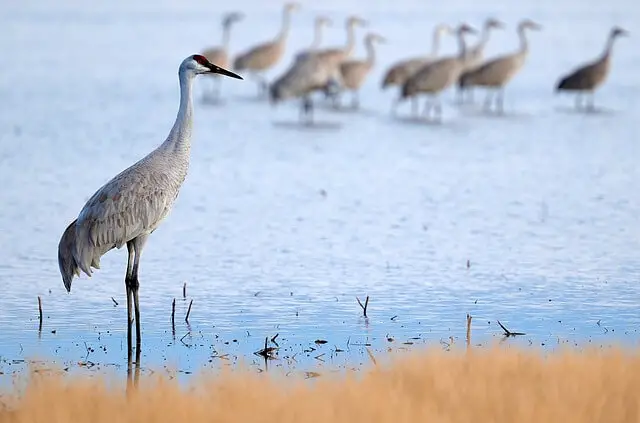
Cranes, in their elegant wisdom, adopt the practice of standing on one leg as a savvy means of heat preservation. When the mercury dips, it’s not uncommon to witness a crane gracefully shift from one leg to the other, sparking intriguing theories about this behavior.
Renowned experts propose that the act of balancing on a single leg yields a dual benefit. Firstly, it diminishes blood flow and conserves warmth due to the reduced surface area contact with the ground, effectively minimizing heat loss through both convection and conduction. This becomes particularly crucial in environments where snowy or icy coverings can exacerbate such heat losses.
Gulls

Gulls, the most abundant seabirds worldwide, grace the oceans and inland waters, particularly coastal realms. Migration, driven by various factors, including escaping freezing temperatures, is vital for their survival. Coping with the challenges of cold winter months is no small feat for these birds.
To combat heat loss, gulls employ an elegant solution – standing firmly on one leg while perched or resting. This seemingly simple act significantly reduces exposed surface area, effectively curbing the loss of body heat through radiation and convection. It’s a testament to their adaptability in the face of ever-changing coastal conditions.
Conclusion
In conclusion, the intriguing world of “16 Birds That Stand On One Leg” has unveiled a captivating array of avian behaviors and adaptations. From the energy-saving grace of flamingos to the thermal equilibrium strategies of storks and geese, these feathered wonders have shown us how nature continually surprises with its ingenious solutions.
This exploration has not only shed light on the reasons behind this behavior but also deepened our appreciation for the remarkable diversity and resilience of the avian kingdom. As we continue to marvel at these graceful creatures, we are reminded that there is always more to discover in the fascinating realm of birds that stand on one leg.

